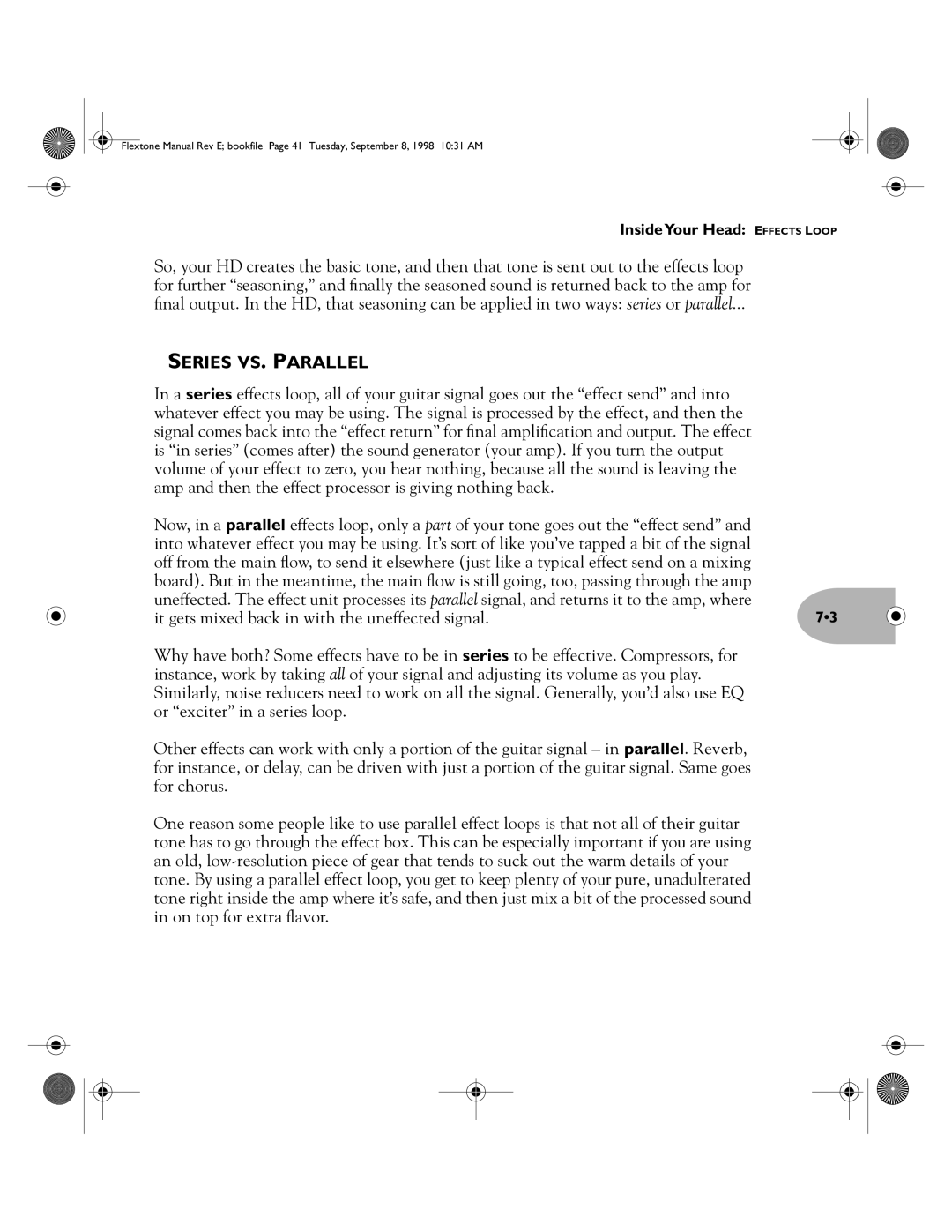
Flextone Manual Rev E; bookfile Page 41 Tuesday, September 8, 1998 10:31 AM
InsideYour Head: EFFECTS LOOP
So, your HD creates the basic tone, and then that tone is sent out to the effects loop for further “seasoning,” and finally the seasoned sound is returned back to the amp for final output. In the HD, that seasoning can be applied in two ways: series or parallel...
SERIES VS. PARALLEL
In a series effects loop, all of your guitar signal goes out the “effect send” and into whatever effect you may be using. The signal is processed by the effect, and then the signal comes back into the “effect return” for final amplification and output. The effect is “in series” (comes after) the sound generator (your amp). If you turn the output volume of your effect to zero, you hear nothing, because all the sound is leaving the amp and then the effect processor is giving nothing back.
Now, in a parallel effects loop, only a part of your tone goes out the “effect send” and |
|
into whatever effect you may be using. It’s sort of like you’ve tapped a bit of the signal |
|
off from the main flow, to send it elsewhere (just like a typical effect send on a mixing |
|
board). But in the meantime, the main flow is still going, too, passing through the amp |
|
uneffected. The effect unit processes its parallel signal, and returns it to the amp, where |
|
it gets mixed back in with the uneffected signal. | 7•3 |
Why have both? Some effects have to be in series to be effective. Compressors, for instance, work by taking all of your signal and adjusting its volume as you play. Similarly, noise reducers need to work on all the signal. Generally, you’d also use EQ or “exciter” in a series loop.
Other effects can work with only a portion of the guitar signal – in parallel. Reverb, for instance, or delay, can be driven with just a portion of the guitar signal. Same goes for chorus.
One reason some people like to use parallel effect loops is that not all of their guitar tone has to go through the effect box. This can be especially important if you are using an old,
